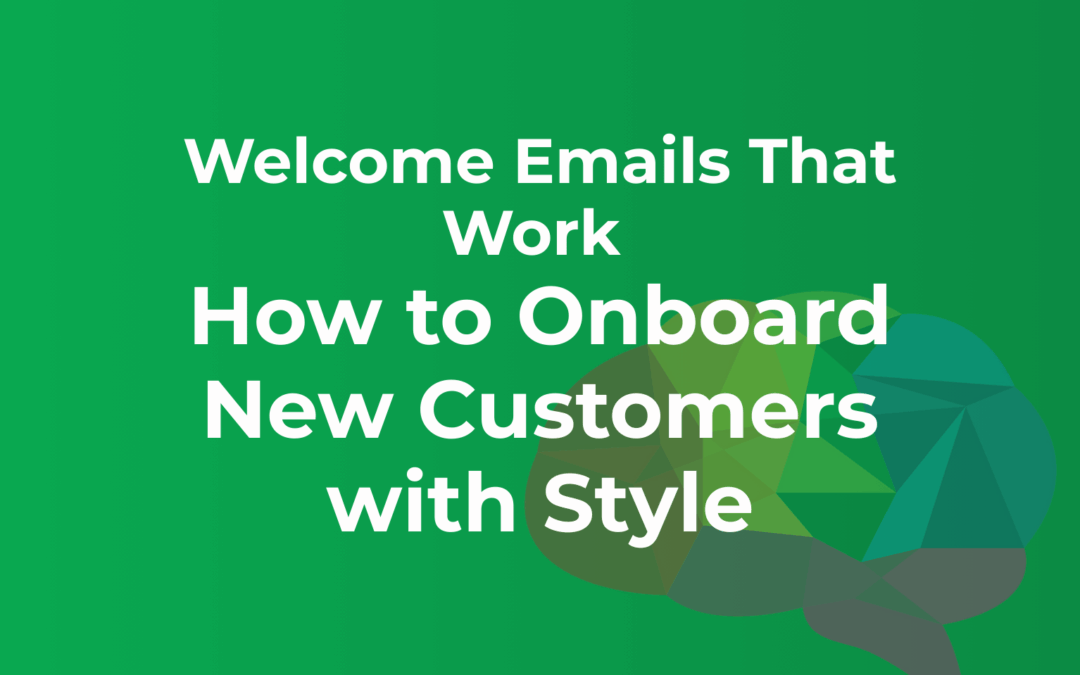Let’s talk about one of the most ignored, underutilized, high-impact assets in your marketing stack:
The welcome email.
It’s the email with the highest open rate you’ll ever send.
It’s also the one most startups rush through, overcomplicate, or forget to send at all.
But here’s the thing:
Your welcome email does more than say “thanks.”
It sets the tone. It builds trust. It tells your new customer, “You’re in the right place.”
And in a world where attention is hard to win (and easy to lose), a good welcome email makes sure your relationship starts on the right foot.
So let’s break down how to write a welcome email that actually works — one that reflects your brand, helps your customer take action, and doesn’t sound like it was written by a no-reply address in 2012.
What a Welcome Email Should Do
Your welcome email doesn’t need to be long, clever, or designed like a Super Bowl ad.
But it does need to do a few specific things — really well:
- Acknowledge the action: Whether someone signed up, subscribed, joined a waitlist, or bought something — let them know it worked.
- Set expectations: Tell them what to expect next. Will they get regular emails? Is there a setup process? Are you still in beta?
- Show a little brand personality: This is your first real impression. Be clear, but let your tone shine through.
- Guide them to a next step: Don’t just say “Thanks!” — help them move forward. Whether it’s logging in, booking a demo, or reading a quickstart guide, one clear CTA goes a long way.
That’s it. Four things. One email. High return.
What to Avoid in a Welcome Email
Just because welcome emails are simple doesn’t mean they’re always done well.
Here are a few common mistakes that make welcome emails fall flat:
- Overloading the inbox.
You don’t need to include 10 links, 6 buttons, and 3 product tutorials. Keep it focused.
One CTA. One path forward. - Trying too hard with buzzwords.
“Thanks for joining our transformative solution platform!”
No one talks like this. You shouldn’t either. - Sending from a “no-reply” address.
You just invited someone into your world. Don’t slam the door shut before they can respond. - Making it all about you.
“We’re so excited to tell you about our journey!”
Great — but the user just wants to know what’s next. Focus on them, not your roadmap.
Build Your Welcome Email Like a Human
Think of your welcome email like a handshake. Not a sales pitch.
Here’s a simple structure that works for just about any product or service:
Subject line
Make it clear and friendly — skip the jargon.
Examples:
-
- “Welcome to [Product Name] — Let’s Get Started”
- “You’re In. Here’s What’s Next.”
- “👋 Glad You’re Here.”
Opening line
Acknowledge the action and welcome them personally.
-
- “Thanks for signing up — we’re excited to have you.”
- “You’re on the list. Here’s what you can expect.”
- “Hey [First Name], welcome aboard!”
This is your moment to say, “You made a good choice.”
The body
Now give them direction — not a deluge of info.
-
- Let them know what to expect next (emails, product access, beta updates)
- Reinforce what they’ll get out of the experience
- Include one single CTA: login, get started, view dashboard, download something, etc.
You want momentum, not confusion.
Sign-off
End like a human. Even if it’s automated.
Examples:
-
- “Talk soon,
The [Product Name] team” - “Thanks again,
— [Your Name]”
- “Talk soon,
Below that, you can include optional links (support, FAQs, socials) in the footer — but keep them secondary.
Make It Feel Like Your Brand
This is your first real chance to sound like you.
So don’t go full corporate unless your brand actually is corporate.
Some ideas:
- If you’re casual on your site, stay casual here.
- If your product is polished and high-end, match that tone and layout.
- If your team is fun and quirky, your welcome email should be, too.
The point isn’t to impress. It’s to feel aligned.
Let your voice — not your vocabulary — do the heavy lifting.
Want to Go Bigger? Try a Welcome Series
If your product is more complex or you’re trying to drive specific actions, a one-and-done email might not be enough.
Enter: the welcome series — a short, automated flow (2–4 emails) that keeps your new customer engaged over their first few days.
Here’s a basic structure:
- Welcome + What to Expect
- Reassure them. Tell them what happens next. Offer one CTA.
- Quickstart or How-To
- Help them succeed early. Share your #1 tip or guide.
- Customer Example or Testimonial
- Reinforce their decision. Show someone like them who’s seen success.
- Engagement CTA
- Ask them to do something: book a demo, invite a teammate, upgrade, etc.
You can build this gradually — start with one email, then add others as your onboarding grows.
Final Thoughts: Simple Wins. Clarity Converts.
You don’t need the perfect copy or the fanciest design.
You just need to:
- Say thank you
- Show them what’s next
- Help them feel confident
- Guide them one step forward
A great welcome email isn’t about selling — it’s about building trust.
It says, “We see you. We’ve got you. Let’s go.”
And when you do it well?
That first impression becomes the beginning of a much longer relationship.
Need help writing your welcome email or setting up a simple onboarding series?
Mathlete Marketing can help you create something clear, compelling, and actually on-brand.
Let’s make your first impression your best one.

